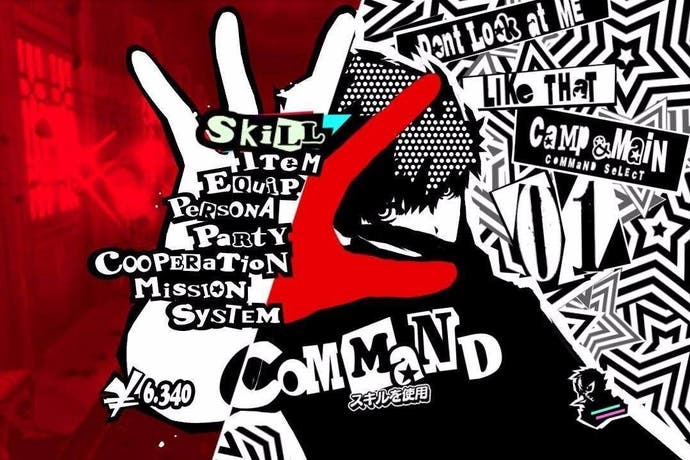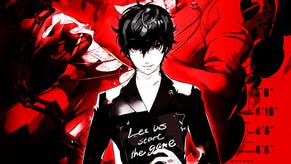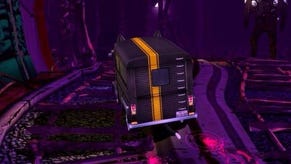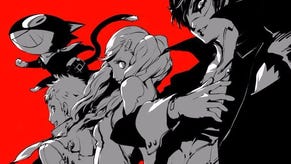Let's talk about Persona 5's menus
A brief chat with game director Katsura Hashino.
Let's talk about Persona 5's menus, because they're great. Ostentatious, audaciously intricate, the spectacle of their existence defies common wisdom. Traditional design sensibilities suggests that menus should be austere, informative, but Persona 5 has transformed its own into a gallery of kinetic art pieces so visually distinctive they're almost the star attraction.
This choice in gorgeously flamboyant aesthetics is hardly surprising. Katsura Hashino, the game's director, explained that it was intended to reflect Persona 5's central theme: a coming-of-age story focusing on youth going their "own personal way" and rebelling against the world. To emphasise this leitmotif, the game, which has been periodically described with the words "picaresque juvenile," needed a strong graphical style to match.
But that isn't the only reason for Persona 5's striking pop-punk look. Hashino, who also oversaw the creation of Persona 3 and Persona 4, wanted to demonstrate how a simple change of mindset could alter a "boring life" into a "very exciting Phantom Thief life," and to do so, they needed a way to contrast the banality of high-school existence with the more fantastical elements of the game. The user interface became a medium for communicating that idea.
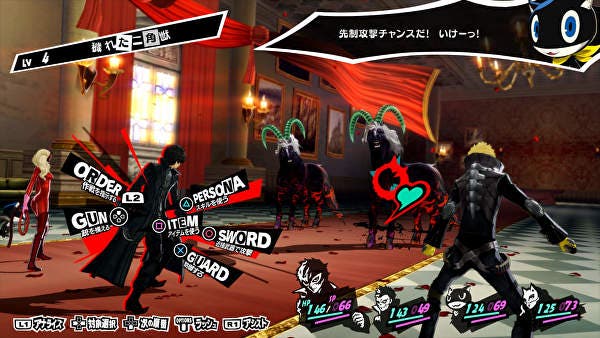
It wasn't easy getting to the finished product, however. According to Hashino, the visuals in the earliest incarnations of the interface were "aggressively animated." At one point, it even became too hard to see what was going on.
He gives me an example: there was a time when certain messages were displayed on-screen in an extremely diagonal manner, so much so that the development team found themselves going, "This is way too much."
So adjustments had to be made for the sake of presentation. The orientation of messages was subtly rotated, the animations were calmed. Everything was carefully toned down so as to achieve a better balance of style and user-friendliness.
Rarely do we as players think about the decisions that influence a game's development. And it is genuinely fascinating to see what precipitated some of the design choices made in the long-delayed Persona 5. For example, there are a number of sequences where player control is minimised to the point of irrelevance. Autonomy is restricted to a few dialogue options, the "choice" to move between several designated spots. I thought it was a bold move. Despite the frustration they can engender, these vignettes tell the game's story superbly, possessing a momentum that might have otherwise been ruined by a player's lack of navigational ability.
Hashino says they didn't intentionally decide to take control from the players. "In Japan," he says. "It feels like you don't have that much freedom when it comes to high school life." Outings are determined by consensus. School trips are heavily curated experiences with every movement dependent on adult instruction.
"It felt like having a little bit of restriction in the game was okay. Maybe, even more realistic."
For all its twisted fantasy, Persona 5 can be incredibly grounded in the real world; take, for example, how it's acutely aware of modern society's attachment to technology. The protagonists jabber in a chatroom during class; they traverse the Metaverse through an ominous-looking phone app. Requests are posted to websites, and anyone who has spent any time on Reddit will recognise the discourse in the Phan-site.
As such, it's unsurprising that the development team chose to integrate that into the mechanics. In Persona 4, players had to actively locate Social Link characters before they could actually hang out with them. This led Hashino into thinking about how services like Twitter and Facebook intersect with our real lives, and how almost everyone now possesses a phone. Communication has never been easier. Face-to-face interaction is no longer a requirement. Consequently, it made complete sense to use such prevalent technologies to expedite the player's ability to move around the Tokyo.
I ask Hashino about what he feels in regards to the way social media permits us to say anything we want, however he want. He says he's not sure. A world without social networks might be one free of its associated dangers, but it is also a place where people's ability to express themselves becomes limited. The prevalence of social media in current society allows anyone to say anything at all, and at least everybody can speak for themselves.
It's interesting to see as well how Persona 5 has integrated this conceit into its narrative. While our teenaged protagonists spend the requisite amount of time on their phones, they cannot argue against the public, not even when the worst has been said for them. They can only fulfil their roles, can only hope that their actions will be enough. Because no matter what happens, circumstances demand that they keep a distance - even when their actions have been dearly misinterpreted.
Now, I wonder what inspired that .
